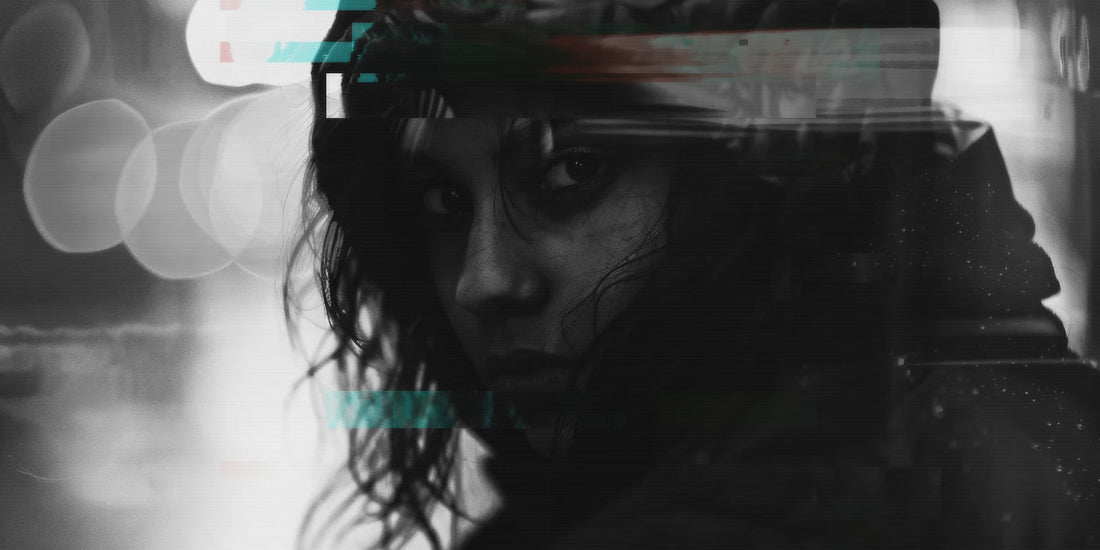Alien Romulus: Offworld Survival Fashion in a Cyberpunk Future

The "Alien" franchise has long been known for its bleak, futuristic vision, and "Alien Romulus" continues that tradition with a strong focus on rugged utilitarian fashion. In a world where survival is paramount, particularly in offworld colonies where miners, explorers, and travelers face unforgiving environments, fashion becomes less about aesthetics and more about practicality. The clothing in "Alien Romulus"—designed with insulation, durability, and functionality in mind—embodies a Cyberpunk ethos of gritty realism that traces its roots back to the original "Alien" film by Ridley Scott.
The clothing in 'Alien Romulus' is survival woven into every thread.
In this piece, we’ll explore how the costume designers of "Alien Romulus" drew inspiration from the utilitarian style of Ridley Scott's original 1979 "Alien", blending it with Cyberpunk’s industrial aesthetic, pioneered further by Scott’s later film "Blade Runner". This fusion created the distinct look of "Alien Romulus", where form follows function, and survival is woven into every thread.
Costume Designers: Linking Back to the Original "Alien"
The costume design team for "Alien Romulus", led by Janty Yates and Luke Scott, have brought a wealth of experience in futuristic and dystopian fashion to the project. Yates, known for her work on Ridley Scott’s "The Martian" and "Blade Runner 2049", had already mastered the art of designing for extreme, futuristic environments. For "Alien Romulus", she focused on creating rugged, durable clothing that would not only look authentic for offworld survival but also pay homage to the utilitarian styles that defined "Alien".
Luke Scott, Ridley Scott’s son, provided input that preserved the gritty, industrial atmosphere of his father’s earlier work, making the clothing a crucial part of world-building.
The influences from "Alien" are clear—particularly the original Nostromo crew’s workwear, which was designed to be functional, protective, and weathered, much like the practical gear worn by miners or explorers. This same utilitarian approach is reflected in "Alien Romulus", where the costumes emphasize survival in inhospitable environments, focusing on insulation, durability, and practicality.
The Utilitarian Style: Form, Function, and Survival
Utilitarian fashion in "Alien Romulus" is rooted in the necessities of survival. The characters are not dressed for aesthetic purposes—they’re dressed to stay alive. Their clothing reflects the harshness of the offworld colony environment, where extreme temperatures, volatile weather conditions, and physical labor are everyday realities.
Durability as a Design Principle
In the film, the clothing’s ruggedness speaks to the demanding conditions faced by miners and colonists. Heavy-duty fabrics such as canvas, denim, and reinforced leather are used to create garments that can withstand the wear and tear of life in an offworld colony. Inspired by the workwear of real-world miners and construction workers, the costume designers focused on materials that were durable and long-lasting, often with visible wear and distressing to reflect the characters' prolonged exposure to harsh conditions.
The use of weather-resistant materials, particularly for outerwear, was key in designing jackets and coats that protected the characters from the elements. Much like the iconic crew uniforms in "Alien", these garments have a lived-in quality, complete with scuffs, tears, and patched areas—evidence that they’ve been repaired and repurposed many times over, highlighting the resourcefulness required in a remote colony setting.
Insulation for Harsh Climates
The characters in "Alien Romulus" often find themselves in cold, unforgiving environments, much like the inhospitable atmospheres of planets like LV-426 in "Alien". The costume designers focused heavily on insulation to ensure the characters' clothing looked fit for survival. Thick, insulated jackets with high collars, layered vests, and thermal undergarments became staples of the wardrobe, with a clear emphasis on warmth and protection against the elements.
Inspired by the original "Alien" film, where characters wore utilitarian jackets over layers of breathable cotton or wool, the garments in "Alien Romulus" feature similar layering. This allowed the designers to create an aesthetic that was both practical and visually striking, with contrasting textures like thick woolen linings against rugged outer shells of canvas and leather.
Layering for Flexibility and Adaptation
One of the most prominent features of the clothing in "Alien Romulus" is its focus on layering. Characters are often seen wearing multiple layers of clothing that can be adjusted based on the environmental conditions—allowing them to strip down during the day’s heat and bundle up when temperatures drop at night.
This adaptability is crucial for offworld colonists and miners, whose clothing needs to be flexible enough to handle the diverse conditions of alien worlds. The film’s costume designers incorporated both lightweight, breathable fabrics like cotton and wool for base layers, and heavier, more durable outer layers to protect against the wind, dust, and cold.
Drawing Inspiration from Ridley Scott’s Cyberpunk Legacy
The influence of Ridley Scott’s "Blade Runner" is palpable in "Alien Romulus", particularly in the way it combines functional workwear with Cyberpunk aesthetics. Scott, after directing "Alien", went on to redefine the Cyberpunk genre with "Blade Runner", a film that famously blends industrial fashion with dystopian storytelling. "Alien Romulus" takes cues from both films, merging the survivalist utilitarianism of "Alien" with the gritty, industrial aesthetics of "Blade Runner".
The clothing in 'Alien Romulus' embodies rebellion, resilience, and survival.
Conclusion: Alien Romulus and the Future of Utilitarian Fashion
The fashion of "Alien Romulus" is more than just costume design—it’s a reflection of survival in the harshest conditions. Drawing from Ridley Scott’s original "Alien" and the Cyberpunk legacy of "Blade Runner", the film’s rugged, utilitarian aesthetic is built around practicality and function. Thick, insulated layers, heavy-duty fabrics, and distressed outerwear all serve as armor for the offworld colonists, miners, and travelers who face an uncertain and dangerous future.
With designers like Janty Yates and Luke Scott behind the scenes, "Alien Romulus" brings a gritty, industrial edge to the fashion of the future, proving once again that in a world where survival is never guaranteed, function always comes first, and style follows suit.








